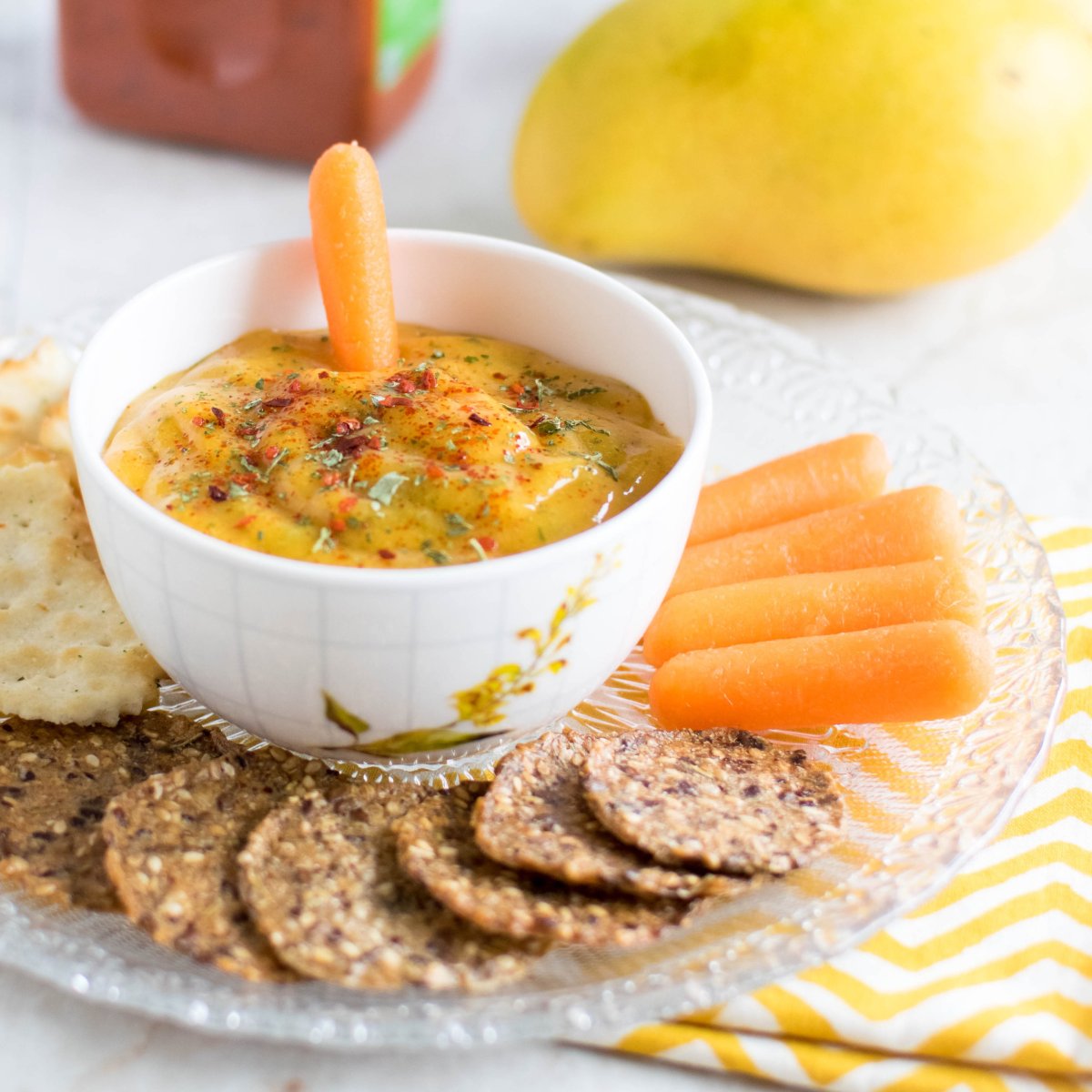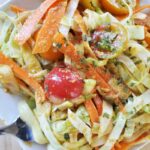Dive into a vibrant world of flavor and texture with our comprehensive guide to raw vegan dips and spreads! Imagine creamy avocado creations, nutty cashew concoctions, and zesty sunflower seed sensations—all crafted without compromising taste or health. This guide unveils the secrets to creating delicious, nutritious, and visually stunning dips and spreads perfect for any gathering, from casual get-togethers to elegant celebrations. Discover the versatility of raw ingredients, learn innovative techniques for achieving diverse textures and flavor profiles, and unlock the potential for endless culinary exploration.
We’ll explore a diverse range of ingredients, from the classic avocado and cashew to more unexpected combinations that will surprise and delight your palate. Learn how to expertly balance sweet and savory elements, achieving the perfect harmony of flavors. Master techniques for creating smooth, creamy, or chunky textures, and discover visually appealing presentation ideas that will elevate your dips and spreads from simple snacks to culinary masterpieces. Whether you’re a seasoned raw food enthusiast or a curious beginner, this guide will equip you with the knowledge and inspiration to create unforgettable raw vegan dips and spreads for every occasion.
Raw Vegan Dip & Spread Recipes for Different Occasions
Raw vegan dips and spreads offer a vibrant and healthy alternative to traditional creamy options, perfect for any gathering. Their naturally vibrant colors and fresh flavors add a touch of elegance and health consciousness to any occasion, from casual get-togethers to sophisticated parties. These recipes showcase the versatility of raw ingredients and offer a delicious way to impress your guests.
Raw Vegan Dip Recipes for Appetizers
Three distinct raw vegan dip recipes are presented below, each designed to complement different appetizer styles and occasions. The recipes emphasize simple preparation methods and readily available ingredients.
- Spicy Avocado Cilantro Dip (Casual Gathering): This vibrant green dip boasts a creamy texture and a zesty kick. Imagine a bowl overflowing with a bright green dip, flecked with cilantro. The avocado’s richness is perfectly balanced by the cilantro’s freshness and a hint of lime juice. A dash of jalapeño adds a pleasant warmth.
- Combine 1 ripe avocado, ½ cup packed cilantro leaves, 2 tablespoons lime juice, 1 jalapeño pepper (seeded and minced), and a pinch of sea salt in a food processor.
- Process until smooth and creamy, adding a tablespoon or two of water if needed to reach desired consistency.
- Serve with tortilla chips, cucumber slices, or bell pepper strips. The vibrant green color of the dip is visually appealing against the contrasting colors of the vegetables.
- Creamy Beetroot and Walnut Dip (Party): This earthy and elegant dip offers a beautiful deep pink hue and a subtly sweet flavor. Picture a deep pink swirl in a stylish bowl, contrasting elegantly with the white of the serving platter. The beetroot’s sweetness is balanced by the walnuts’ earthiness, creating a complex and satisfying flavor profile.
- Cook 1 medium beetroot until tender, then peel and roughly chop.
- Combine the beetroot, ½ cup walnuts, ¼ cup water, 2 tablespoons lemon juice, and a pinch of sea salt in a food processor.
- Process until smooth and creamy. Adjust water for consistency.
- Serve with crostini, toasted baguette slices, or crudités. The deep pink of the dip will be a stunning centerpiece.
- Sun-dried Tomato and Cashew Dip (Special Occasion): This sophisticated dip features the intense flavor of sun-dried tomatoes and the creamy richness of cashews. Envision a rich, reddish-orange dip, glistening with olive oil, served in a small, elegant bowl. The sun-dried tomatoes’ deep flavor is complemented by the cashews’ smoothness, creating a luxurious texture.
- Soak ½ cup raw cashews in warm water for at least 30 minutes.
- Combine the soaked cashews, ½ cup sun-dried tomatoes (oil-packed, drained), ¼ cup water, 1 tablespoon nutritional yeast, 1 tablespoon olive oil, and a pinch of sea salt in a food processor.
- Process until completely smooth and creamy.
- Serve with crackers, vegetable sticks, or toasted pita bread. The elegant presentation will impress guests.
Raw Vegan Spread Recipes
Five unique raw vegan spreads are detailed below, each tailored for specific uses and serving suggestions to enhance the dining experience.
- Spicy Carrot and Ginger Spread (for Bread): A vibrant orange spread with a subtle zing, perfect for whole-wheat bread. Imagine a thick, bright orange layer spread generously on a slice of rustic bread, the color contrasting beautifully with the bread’s brown tones. The carrots’ sweetness is perfectly balanced by the ginger’s spiciness.
- Creamy Avocado and Lime Spread (for Crackers): A smooth, pale green spread with a refreshing citrus tang, ideal for crackers or crudités. The creamy texture of the avocado provides a lush contrast to the crispness of the crackers.
- Savory Hemp Seed and Olive Spread (for Vegetables): A slightly earthy, dark green spread with a nutty flavor, excellent for dipping vegetables. The deep green color contrasts beautifully with the bright colors of the vegetables.
- Sweet Beetroot and Walnut Spread (for Toast): A deep pink spread with a subtly sweet flavor, perfect for toasted bread. The vibrant pink color provides a visually striking contrast against the golden brown of the toast.
- Creamy Cashew and Basil Spread (for Sandwiches): A pale green spread with a fresh, herbaceous flavor, ideal for vegan sandwiches. The creamy texture adds a luxurious feel to the sandwich filling.
Adapting Raw Vegan Dip Recipes for Dietary Restrictions
Basic raw vegan dip recipes can be easily modified to accommodate various dietary needs. For example, nut-free dips can be created by substituting sunflower seeds or pumpkin seeds for nuts. Soy-free options are achieved by avoiding soy-based ingredients like soy sauce or tamari. Seed-based dips, such as sunflower seed or pumpkin seed dips, provide creamy alternatives to nut-based recipes. Always carefully check ingredient labels to ensure products are free of allergens.
Techniques for Creating Different Textures & Flavors

Mastering the art of raw vegan dips and spreads involves understanding how to manipulate textures and flavors to create truly captivating culinary experiences. The beauty lies in the simplicity of the ingredients and the surprising range of textures and tastes achievable through careful blending and strategic ingredient selection. This section explores the techniques to achieve this mastery.
Achieving Diverse Textures in Raw Vegan Dips and Spreads
The texture of a raw vegan dip or spread is paramount to its overall appeal. A perfectly smooth hummus contrasts beautifully with a chunky salsa, and a creamy cashew cheese stands apart from a vibrant, textured sun-dried tomato spread. Achieving these diverse textures hinges on the ingredients chosen and the processing methods employed. For creamy textures, high-fat ingredients like avocados, cashews, or coconut cream are essential. These ingredients naturally lend themselves to a smooth, velvety consistency when blended. For a chunky texture, ingredients like finely chopped vegetables, nuts, or seeds are added to a base of creamy ingredients. The level of chunkiness can be adjusted by controlling the size of the chopped ingredients. To achieve a smooth texture, high-speed blending is crucial; a high-powered blender is recommended to achieve the desired silky smoothness, eliminating any undesirable lumps or fibers.
Balancing Sweet and Savory Flavors
The delicate balance between sweet and savory is key to creating truly memorable raw vegan dips and spreads. This balance isn’t just about adding sugar; it’s about layering flavors to create a harmonious and complex taste profile. Sweetness can be introduced through naturally sweet ingredients like dates, mangoes, or ripe bananas. These fruits offer a natural sweetness that complements savory elements without overpowering the overall flavor profile. Savory notes can be achieved through ingredients like nutritional yeast (for a cheesy flavor), sun-dried tomatoes, roasted red peppers, or herbs like basil or cilantro. The key is to experiment with ratios, gradually introducing sweet and savory components until the desired balance is reached. For example, a sweet and savory date-based dip might include a blend of pitted dates, roasted red peppers, and a touch of balsamic vinegar for a depth of flavor.
Creating Visually Appealing Raw Vegan Dips and Spreads
The visual appeal of a dip or spread is often the first thing that captures attention. A vibrant, colorful spread is more likely to entice diners than a dull, monotone one. Color and presentation play a crucial role in creating an inviting and appetizing dish. To enhance the visual appeal, consider using a variety of brightly colored ingredients. Red bell peppers, orange carrots, yellow squash, and green herbs create a naturally vibrant palette. Strategic placement of ingredients within the dip or spread itself can further enhance its visual impact. For instance, a swirl of a contrasting color can add visual interest. Serving the dip in a beautiful bowl or on a visually appealing platter also contributes to its overall aesthetic. Imagine a vibrant green avocado dip served in a rustic wooden bowl, garnished with a sprinkle of toasted pumpkin seeds and a drizzle of high-quality olive oil. The contrast of textures and colors enhances the overall appeal, transforming a simple dip into a culinary masterpiece.
Storage and Shelf Life of Raw Vegan Dips and Spreads
Maintaining the vibrant freshness and delicious flavors of your homemade raw vegan dips and spreads requires careful attention to storage. Proper techniques ensure not only a longer shelf life but also prevent the growth of harmful bacteria and maintain the integrity of the delicate ingredients. Understanding the factors influencing shelf life allows for better planning and reduces food waste.
Optimal Storage Containers and Temperatures
Airtight containers are crucial for preserving the quality of raw vegan dips and spreads. Exposure to air can lead to oxidation, causing discoloration and a loss of flavor and nutrients. Glass containers are ideal, as they are non-reactive and easy to clean. However, sturdy, food-grade plastic containers can also be used, provided they are airtight and BPA-free. For optimal freshness, store your dips and spreads in the refrigerator at a temperature between 35°F and 40°F (2°C and 4°C). This temperature range inhibits bacterial growth and slows down enzymatic activity that can lead to spoilage. Avoid storing dips and spreads directly on the refrigerator door, where temperature fluctuations are more significant.
Factors Affecting Shelf Life
Several factors influence the shelf life of raw vegan dips and spreads. The type of ingredients significantly impacts longevity. Dips with high water content, such as guacamole or gazpacho, tend to have a shorter shelf life than those with a drier base, such as sun-dried tomato pesto. Similarly, the presence of highly perishable ingredients, like leafy greens or avocados, reduces the overall shelf life. Additionally, the preparation method affects shelf life. Properly sanitized equipment and hands prevent the introduction of bacteria, extending the shelf life. Finally, the storage environment plays a critical role; consistent refrigeration at the correct temperature is paramount. A dip left at room temperature will spoil much faster than one stored properly.
Tips for Extending Shelf Life
To maximize the shelf life of your raw vegan dips and spreads, consider these practical tips. First, use high-quality, fresh ingredients. Second, prepare dips and spreads in smaller batches to consume them before spoilage. Third, promptly refrigerate dips and spreads after preparation to slow down bacterial growth and oxidation. Fourth, ensure your containers are thoroughly cleaned and dried before use to prevent contamination. Fifth, avoid repeatedly dipping utensils into the dip; instead, use a clean spoon each time to prevent the introduction of bacteria. Sixth, consider adding a small amount of lemon juice or other acidic ingredient to some dips to help inhibit bacterial growth (note: this is not universally applicable and may affect flavor). Seventh, if you notice any signs of spoilage, such as off-odors, mold, or unusual discoloration, discard the dip immediately.
From simple appetizers to sophisticated party fare, raw vegan dips and spreads offer a world of culinary possibilities. This guide has equipped you with the knowledge and recipes to create delicious and healthy dips and spreads that will impress your guests and satisfy your taste buds. Remember to experiment with different ingredients and techniques, and don’t be afraid to get creative with your presentation. With a little practice, you’ll be crafting stunning, flavorful raw vegan dips and spreads for any occasion, showcasing the beauty and versatility of plant-based cuisine. The journey of culinary exploration continues; enjoy the delicious results!
Questions and Answers
How long can I store raw vegan dips and spreads in the refrigerator?
Most raw vegan dips and spreads will last 3-5 days in an airtight container in the refrigerator. However, this can vary depending on the ingredients used.
Can I freeze raw vegan dips and spreads?
Freezing some raw vegan dips and spreads is possible, but the texture might change upon thawing. Creamy dips tend to separate more easily after freezing. It’s best to test a small batch before freezing a larger quantity.
What are some good substitutes for nuts in nut-free dips?
Sunflowers seeds, pumpkin seeds, and tahini are excellent nut-free alternatives that provide similar creaminess and richness.
How can I make my raw vegan dips and spreads more flavorful?
Experiment with herbs, spices, citrus juices, and different types of vinegar to add depth and complexity to your dips and spreads.


